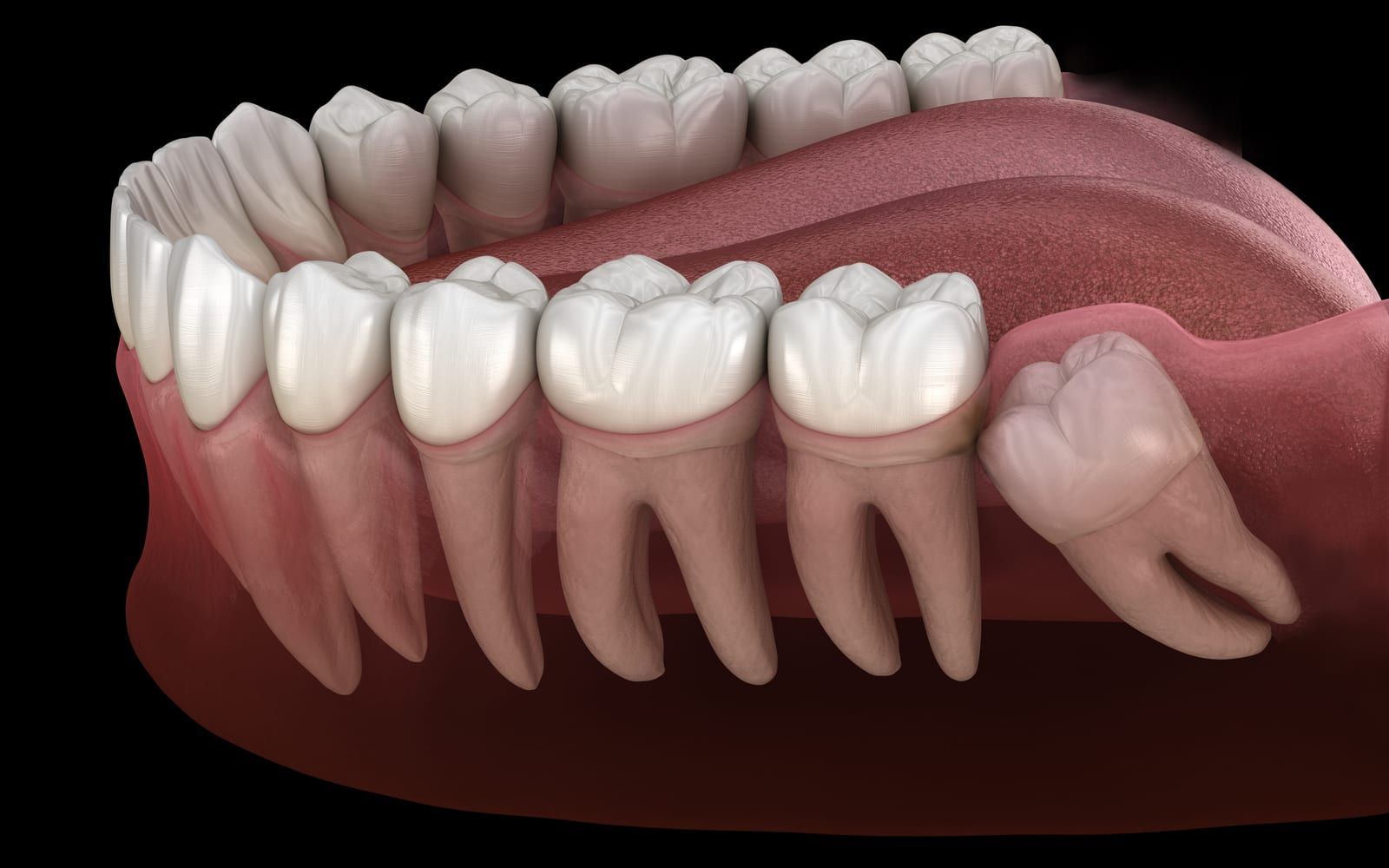Two Types Of Wisdom Tooth Impaction

Wisdom teeth used to play an important role in making sure that we were able to get the nutrition we need from hard, difficult to chew foods. As the human mouth, and diet, have continued to develop so have our mouth’s adapted with them. One result of this adaptation is the shrinking of our mouths and the loss of need for our wisdom teeth. While a vestigial element of our oral development, almost 50% of all dental patients will have to deal with them at some point in their lives. In most cases this will require an extraction as the tooth becomes impacted and potentially damaging nearby teeth.
The Types Of Wisdom Tooth Impaction
While they are all covered broadly under the term ‘impaction’, there are actually four separate types of wisdom tooth impaction. Each type describes the position of the wisdom tooth and the angle at which it is attempting to erupt. Below we’ll discuss each of the four types.
- Vertical Impaction – This type of impaction describes a tooth that is otherwise perfectly aligned, but is unable to finish pushing through the gum. In most cases these teeth will not require being extracted since they don’t typically cause any complications. In the event that they are pushing against the neighboring molar or are pressing against the bone they can be removed. In most cases this procedure will be done under local anesthesia.
- Mesial Impaction – Out of the four different impaction types, this one is the most commonly seen. In this case the tooth is tilted forward relative to the mouth opening, causing it to exert pressure on the nearby molar as it attempts to erupt. In some cases this tooth may not require being removed. Whether it does or not is determined by the angle at which it is trying to erupt.
- Distal Impaction – This rarely seen type of impaction involves the tooth being pointed towards the back of the mouth. Once again the angle of the tooth is going to determine whether or not an extraction is actually necessary. If tilted too far it could eventually impact bone.
- Horizontal Impaction – This form of impaction is more common than distal impaction, and is the most painful form of impaction to have. This describes the tooth angled directly towards the front of the mouth, 90 degrees from its intended position. Teeth in this position will press against the molar in front of it, causing extraordinary pain if left untreated. In most cases the patient will be put under general anesthesia for the extraction, which always requires surgery. Removing this type of impaction often requires removal of a small amount of bone.
If you’re experiencing oral pain that you think may be associated with impacted wisdom teeth, schedule an appointment at Summit Dental today. You’ll be scheduled for an appointment with Dr. Brian Schowengerdt at out office in Lees Summit, MO. During your appointment you’ll undergo a standard exam followed by a consultation discussing what steps are available for treating your oral pain.
